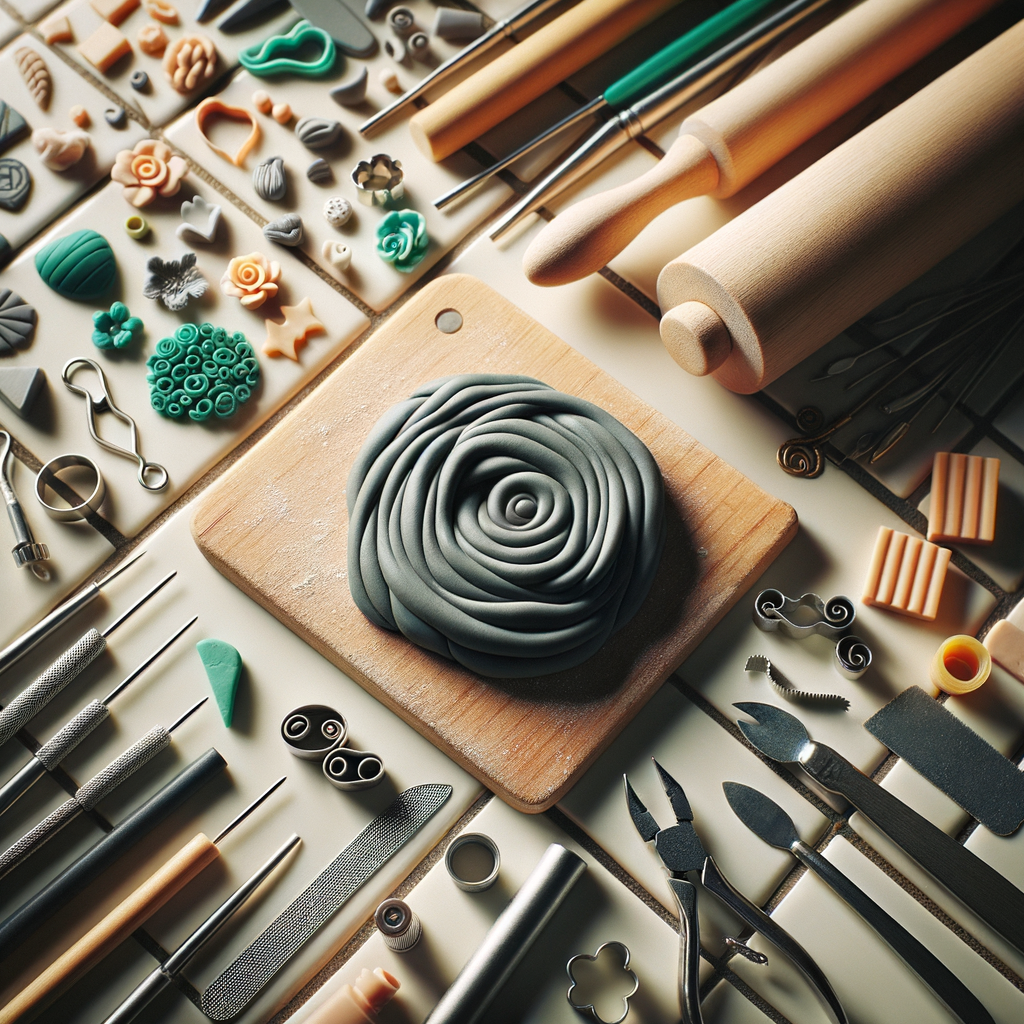
Top 10 tools I use for Polymer clay making
Share
1) Acrylic Roller: I find that an acrylic roller works well for rolling out my polymer clay. I have ordered a few different rollers off of Amazon in the past and I have found that not all of the rollers are created equally. Some of the Rollers are prone to cracking internally and eventually becoming unusable. I have linked below the roller that I have had good luck with. It comes in a set that also has rolling guides as well as two of the other tools listed below. Keep in mind that one of the rollers is hollow and so I am not sure how that one will hold up over time but given the price and the amount of useful tools I still find this set worth it.
Why do you need a roller? While I do use my Pasta machine for rolling my clay to a desired thickness there are still other reasons why you do need a roller in addition to the pasta machine.
- If you are just starting out and are not ready to invest in a pasta machine you can start out with just using an acrylic roller. When I first started using polymer clay I would use an acrylic roller paired with two large popsicle sticks on either side of my clay. By placing the popsicle sticks I could ensure that I was rolling out my clay at an even thickness.
- Even when using a pasta machine you will need to get your polymer clay to stick to a surface in order to use cutters effectively. Once your clay has been rolled through the pasta machine you will then need to roll it onto a smooth surface like a ceramic tile gently and evenly to prepare it for the polymer clay cutters.
2) Tissue Blade: A tissue blade is also one of the first tools you should purchase when starting out on your polymer clay journey. The tissue blade serves many purposes when creating.
- Cutting polymer clay: the tissue blade works well for cutting up your polymer clay into smaller pieces whether that is to add paint to create a stone effect or to create a fun striped look with multiple colors of clay.
- The tissue blade is also used when removing your clay cutouts from the worksurface. While many people do this flawlessly I try to avoid moving the clay once it has been cut as I don’t want the shape to change. I do find that certain clays are harder to move once cut due to being softer. That being said I have seen many people use this technique to bake more pieces closely together at once.
- Adding texture: I love using the tissue blade to add texture to the surface of the clay. This can be done by evenly making small cuts to the surface of the clay.
3) Atlas 180: Once you have decided that you would like to further invest in your clay making, an extremely helpful and time saving tool would be a pasta machine. I have the Atlas 180 that has been modified so that the blades on the bottom can be removed to clean out clay buildup. There are less expensive options to start out with. I started out with a roller that I purchased from Michaels and upgraded when it gave out. Why is a pasta machine useful?
- A pasta machine allows you to mix and condition clay much faster and easier than you can by using an acrylic roller. (Note: always make sure to place the clay in the pasta machine with the folded side facing down and passing through the rollers first in order to help avoid air bubbles) Check out our rolling guide for illustrations of how to do this.
- A pasta machine also helps you to roll out your clay with an even thickness all the way across.
The Atlas pasta Roller also comes in a 150 size that is smaller than the one I have and a bit less expensive. I do find that I utilize the larger 180 size.


Atlas 180 (Non- Modified version blades cannot be removed for cleaning)
4) Sharp Polymer Clay Cutters: using good quality cutters for polymer clay jewelry makes a world of difference. We are now offering a starter bundle of polymer clay cutters for new makers. This bundle includes basic shapes to get your started.

5) X-Acto knife: Is a very useful tool for polymer clay and lasts for a long time. This is a tool I always keep close as I always have a use for it. What is an X-Acto knife used for?
- When using polymer clay air bubbles can be unavoidable at times. While using the proper techniques for rolling out your clay can help considerably there are things during the manufacturing of the clay that can make one bar of clay more prone to bubbles than others. An X-Acto knife can be such a useful tool when getting rid of air bubbles, simply roll out the clay and use the sharp point of the knife to pop any air bubbles you see.
- Adding detail on leaves and flowers: using the sharp and small edge of the knife can be a great tool for adding small details when making florals with your polymer clay.
- Cutting small details. While using our new Cupcake cutter the other day I wanted to add some sprinkle details to the top of the frosting. I simply rolled out a piece of clay into a thin snake like shape and cut it into the size of a sprinkle.

These are just a few examples of what you will use the X-Acto knife for but one think i can promise is that you will find many uses.
6) Sandpaper: I find myself using sandpaper on my polymer clay very often. I love the texture that it gives the clay and using different grits of sandpaper can have a different look. One of the things I love doing with the sandpaper is to brush mica powder onto the surface of the clay and then use the sandpaper to add texture on top of that, this creates such a cool shimmering finish.
I was not able to find the 3M multi pack I bought in the past but below is something similar.

7) Soft Bristle Brush: a soft bristle brush is very useful, you can use a cheap makeup brush or paintbrush. What do I use the brush for?
- Very detailed cutters are best used with a barrier between the clay and the cutter. I like to use cornstarch with my detailed cutters. I simply dip my cutter on a plate of cornstarch and then tap the top to remove any excess cornstarch. Once the clay has been cut you will notice that there is often cornstarch residue left on the surface of the clay, simply take a soft bristle brush and gently brush the surface of the clay to remove the cornstarch.
- Adding Mica powder or color shifting powder is such a fun way to add detail to your clay. Using a soft bristle brush for this as well is very useful. I make sure to have a separate brush from my cornstarch and mica powders. I also have brushes in various sizes that help me to add detail to smaller areas.
The Brush set I purchased is no longer available on Amazon but the one linked below looks similar.

8) Silicone Brush: A silicone brush is very helpful when applying resin to the baked surface of your polymer clay. The silicone brush works well to spread the resin over the surface evenly. When you are done applying your resin simply put the silicone brush under the uv light (if using uv resin) and cure it with your pieces. Once the resin has cured on your silicone brush it will be easy to peel off and remove.
![]()
Silicone brush and dot tool set
9) Ceramic tile: I use a ceramic tile as my work surface when creating with Polymer Clay. detailed cutters work best when your clay adheres to your surface and a ceramic tile works well for this. You can simply go to your local Home Depot or Lowes and buy a Shiny Ceramic tile. The Shiny tiles work the best as the clay tends to stick to them better than a matte tile. The best part about using a ceramic tile is that you can simply leave your clay designs on them and place them in the oven to bake.

10) Hand Drill/ Hole Maker: I use my dremel for sanding but I actually prefer the control I get with a small manual hand drill. While this does take more time I feel like I have better control. Maybe one day I will develop the skills to use the dremel for my holes and save some time.

I have linked all of the tools listed above for your reference. Please note that I do receive a small amount of money for my affiliate links.


